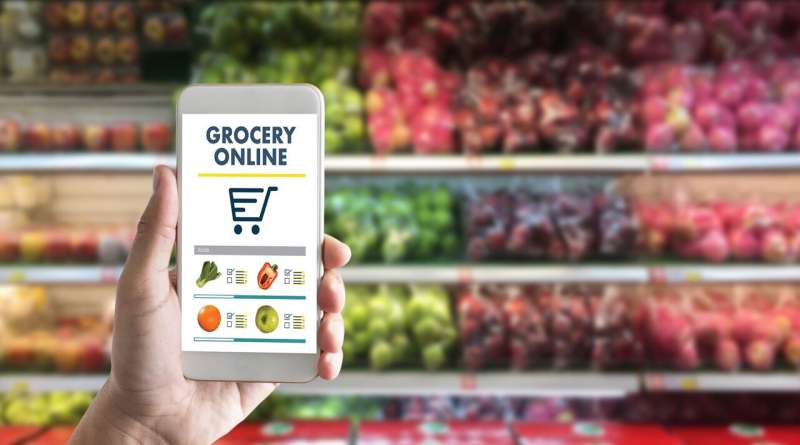This article has been reviewed according to Science X's editorial process and policies. Editors have highlighted the following attributes while ensuring the content's credibility:
fact-checked
peer-reviewed publication
trusted source
proofread
Mismatch between expected and actual nutritional value is key driver behind negative reviews of online grocery sites

Online grocery shopping has become more popular since the COVID-19 pandemic. Sales from online food retail in the United States are projected to grow from 9.5% of total food commerce in 2020 to 20.5% in 2026. Given this, consumer reviews of grocery products have also become more important in shaping buying behavior.
Ran Xu, assistant professor of allied health sciences in the College of Agriculture, Health and Natural Resources recently published an article in the Journal of Consumer Psychology demonstrating that one of the key drivers behind negative reviews on Amazon Fresh, Amazon's grocery delivery service, is a mismatch between a products' expected and actual nutritional value.
"No matter whether it's a 'good' surprise or a 'bad' surprise, people tend to write negative reviews" Xu says. "People in general don't like surprises, especially when considering the nutritional value of the food."
This work was a collaboration between Xu and researchers at the State University of New York at Oswego, California State University Domingeuz Hills, and Duquesne University.
Xu's collaborator Yiru Wang, an assistant professor of marketing who focuses on consumer behavior and the leading author of this paper, had compiled a comprehensive dataset of Amazon Fresh reviews, and Xu, who is interested in consumer health, became involved in the project.
The researchers adopted the Supporting Wellness at Pantries (SWAP) system to label the food items based on their actual nutritional value. It is a stoplight nutrition ranking system that ranks foods as green (healthiest), yellow, or red (least healthy) based on levels of saturated fat, sodium and added sugars.
"A growing number of food banks and food pantries are already adopting this system because it is very easy to use and can be easily understood by consumers," Xu says.
The researchers used two independent coders to label the same food items as green, yellow, or red based on their expected nutritional value, and investigated how the actual and expected nutritional value of the food will affect the content and sentiment of the consumer reviews.
The researchers found that when consumers expect food to be healthy, they tend to highlight the product's nutritional value in their review content. By contrast, if consumers expect food to be unhealthy, they will focus on the item's taste or packaging instead in their reviews.
The researchers also found that the number one driver of negative reviews was a disconnect in expectations versus reality.
"When there is a mismatch between people's expectation of the healthiness and actual healthiness of the product, people tend to write more negative reviews of the product," Xu says. "The review is most negative when there is a negative mismatch, meaning the product I got is much less healthy than I expected."
However, even a "good" surprise can lead to negative reviews, like when consumers want to indulge in an unhealthy food for the "guilty pleasure" of it. When they discover the product is healthier than expected, they tend to write negative reviews.
Another interesting finding was that consumers may not be adept at identifying which foods are healthy and unhealthy.
Participants correctly identified "green" products about two thirds of the time. But they correctly identified "red" products, less than 50% of the time.
"If they represent the average consumer, this means that people are not that good at recognizing unhealthy foods," Xu says.
Xu says these findings are not that surprising as nutritional information is often buried or difficult to read on online grocery shopping sites.
Given that negative reviews can significantly impact companies' sales, these findings suggest that companies should work to avoid misleading consumers about the healthiness of food products. Xu suggests companies could do this by making it easier to find nutritional information, or adopting something like the stoplight system the researchers used.
"We think these easy approaches can reduce the mismatch between expectations and reality, which will reduce negative sentiment, and will be good for the company as well," Xu says. "On the consumer side, it will increase the consumer's nutritional awareness and help people make more healthy choices—hopefully."
More information: Yiru Wang et al, But it was supposed to be healthy! How expected and actual nutritional value affect the content and linguistic characteristics of online reviews for food products, Journal of Consumer Psychology (2023). DOI: 10.1002/jcpy.1376
Journal information: Journal of Consumer Psychology
Provided by University of Connecticut




















